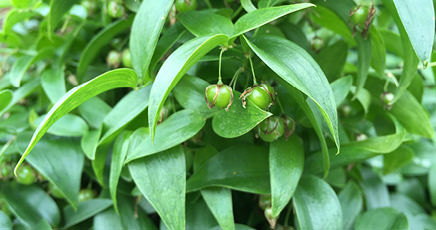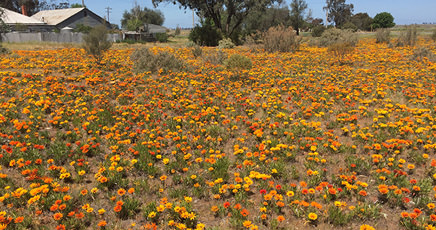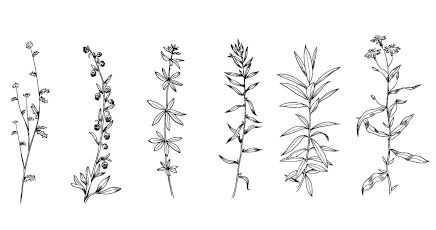STORY
Suyin and Tom decided to take Grace to the park to show Grace that some of the pretty flowers that grow in the park are actually weeds. Suyin and Tom were both learning a lot from attending Weed Warriors with Tom’s Dad and they were keen to share their knowledge. Using a Weed Warriors reference sheet, Suyin and Tom decided to print images of the most common weeds in their area to help Grace identify them.
“It is important to be very observant, Grace. We already told you that dandelions are weeds and that we must remember not to blow their seeds. To help us identify other weeds, we would need to look at their flowers, colour, plant shape, leaf forms and and if we can see seeds. “ Grace could not believe she was seeing a lot of the flowers and plants that were in the reference sheet. Are these pretty flowers really bad for the environment?

In this activity we will be looking for weeds in your local park, backyard and surrounds. Build your knowledge and weed investigation skills as you explore your local environment and examine the presence of weeds. Using online resources, field guides and expert local knowledge, you will be looking at and identifying weeds in three different locations in your setting and discussing the issues that they may cause.
This learning activity is the first part of a sequence of 2 individual learning activities focused on understanding weeds. The order of these learning activities are: life cycle and investigation.
For children to:
- understand what weeds they have in their local area
- look at plants and determine if they are weeds or not
- appreciate how quickly weeds can become a problem
- value a weed-free environment, rich in native plant and animal biodiversity
- appreciate and value the work of local weed experts, Landcarers and Indigenous knowledge.
Spring is a perfect time for looking for weeds, due to warmer and wetter weather conditions. As a consequence, it is good time for implementing weed control measures.
Introduction
Investigating weeds in your local area and reaching out to local experts like Landcarers and council staff can help to build identification skills and become a Weed Warrior champion. Because our precious environment is threatened by invasive garden plants and weeds that take over large areas of bushland and evict native species, being skilled in identification and management of weeds is important for the health of your local environment and biodiversity to reduce pressure on fragile ecosystems.
*Time allocation will be dependent on site selection and travel time.
Checklist
Instructions
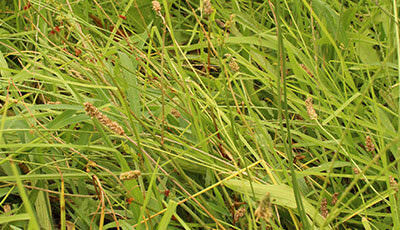
STEP 1
Tuning in
Reflect on what you learnt in the life cycle activity. Can you recall what we learnt? Today we are going to look more closely in our local area for weeds.
Once again, reach out to your local Landcare group or weed expert for some weed identification advice. What did you learn last time from your local weed expert?
For this activity take your group where they will be able to see some weeds.
Often this can be easier to observe in unmown grassy patches or in garden areas where there has been less regular maintenance activity.
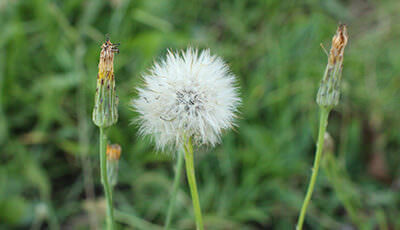
STEP 2
Where are the weeds?
Begin the discussion by seating your group to look at the flowering plants around you. Explain that today we are going on an exploratory mission as Weed Warriors to find out more about local weeds.
To be a Weed Warrior Champion and help look after our environment, you need to be observant, understand your environment and be a problem solver.
The group’s task is to understand what we already know about weeds and conduct an investigation so that we can be active and empowered Weed Warrior Champions.
Let’s collect some ideas first. Use the ‘Did you know facts’ to help build the discussion.
- What are weeds?
- Why do you think weeds are a problem in the community?
- Where do weeds come from?
- Can you name any weeds?

STEP 3
Investigating
Use your observation skills to look closely at your location, and investigate weeds in three different outdoor areas. The visual guides of common weeds will help you, along with any experts, field guides and online resources provided in the resource listing in this activity.
When identifying a weed, use its main features as reference, these could be flower, colour, plant shape, leaf form, presence of seeds and their shape.
Draw the most common weed you can see.
Use the activity sheet to include more information about weeds at each location.
In small groups ‘think-pair-share’ what has been discovered to complete the results.
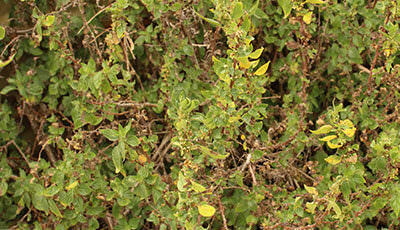
STEP 4
Processing and applying learning
Review the activity sheets and as a group discuss these questions:
- What have you learnt and discovered about weeds in your location?
- How many different kinds of weeds did you find?
- Is there anything that surprised you about your discoveries?
- What actions might you take to reduce the impact of such weeds in your local area?
Extension Activity
Choose a weed from your investigation or local area and explore its impacts and how it can be managed locally. Use this information to create a ‘Wanted’ poster for your weed. Consider ways you can convince others to help find and control this weed.
Research local Indigenous land management practices in your area by reaching out to the Local Traditional owners and Aboriginal community groups who can assist in knowledge sharing and understanding local land. What practices would help with controlling weeds in your local area?
Curriculum and Framework Links
SCIENCE
Year 2: ACSSU030 (AC9S3U01), ACSHE035 (AC9S1H01; AC9S2H01)
Year 3: ACSSU044 (AC9S3U01), ACSIS054 (AC9S3I02; AC9S4I02)
Year 4: ACSHE062 (AC9S3H02), ACSIS064 (AC9S3I01; AC9S4I01)
Year 5: ACSHE083 (AC9S5H02; AC9S6H02) ACSSU043 (AC9S5U01)
Year 6: ACSSU094 (AC9S6U01)
Year 7: ACSHE120 (AC9S7H03; AC9S8H03)
Year 8: ACSHE135 (AC9S7H03; AC9S8H03)
HUMANITIES AND SOCIAL SCIENCES
Year 2: ACHASSI042
Year 3: ACHASSI052, ACHASSI060
Year 4: ACHASSK088, ACHASSK090
DESIGN AND TECHNOLOGIES
Year 7 and Year 8: ACTDEK032 (AC9TDE8K04)
HEALTH AND PHYSICAL EDUCATION
Year 2: ACPPS018
Year 3 & Year 4: ACPPS041
Year 5 & Year 6: ACPPS059
Year 7 & Year 8: ACPPS078
ETHICAL UNDERSTANDING
Exploring values, rights and responsibilities
PERSONAL AND SOCIAL CAPABILITY
Social awareness
CURRICULUM CONNECTIONS
Outdoor Learning
CROSS CURRICULUM PRIORITY
Sustainability
Aboriginal and Torres Strait Islander Histories and Cultures
MY TIME, OUR PLACE: FRAMEWORK FOR SCHOOL AGE CARE
Outcome 2 and 4
Reference List
ONLINE RESOURCES
We recommend the following websites as sources for more detailed information about weed species and please get in touch with your state or territory agricultural organising or local council.
Weeds Australia is a national database to search for weeds in Australia, this includes reference to Weeds of National Significance in Australia. Look at the Impact of weeds on the environment, agriculture and human health. The Weed Identification Tool helps you to identify your weed by flower colour, plant form and location.
NSW Department of Primary Industry has some information on weeds, along with best practice weed management guides.
The Australian Native Plants Society has a series of information sheets about Environmental Weeds in Australia.
PRINTABLE RESOURCES
These educational resources will help support weed activities in your setting:
Print out or use online this series of stories about pest plants from EnviroStories. As they all are written by children and all contain some pictorial facts on local weeds.
Misbehaving plants from the University of New England is a visual PDF that includes some weed definitions and activities.
Future Farming – Weed Warriors Teachers Resource from Agriculture Victoria introduces activities and the Weed Warrior program for schools for students from Year 3 – Year 10.
The Weedbusters publication from Gould League provides a range of activities on learning about weeds.
Enviro-Stories shares stories through students telling their own stories; explore these stories about pest plants.
APPS
Some states and territories have applications to help you identify and report weeds in your location.
NSW
The NSW WeedWise App provides information on over 300 weed species.
QLD
The Weed Spotter App from the Weed Spotters Network Queensland allows you to email photographs of plants to the Queensland Herbarium.
SA
The SA Weed Control App provides essential information about the control of weeds declared under legislation in South Australia.
WATCH
Keeping Country healthy in Kakadu National Park from the Northern Australia Environmental Resources Hub describes how science researchers collaborate with Bininj/Mungguy Traditional Owners to develop and apply Bininj/Mungguy indicators of cultural-ecosystem health, and use this to identify priority areas for targeted Para Grass weed control. (4 minutes 15)
Learn about a range of Wicked Weeds’ from central Queensland and how to control them from student Ivy Schmidt in this video from Landcare Australia. (9 minutes 44)
Sustainable Gardening Australia offers this entertaining video on how to manage weeds in Weeds, not in my backyard (5 minutes)
Learn about the Coastal Weeds Project with the NSW Far South Coast Landcare Association (6 minutes 30).
ACKNOWLEDGEMENT
This learning activity has been developed in partnership with the Victorian Government Department of Environment, Land, Water and Planning. https://www.environment.vic.gov.au/
IMAGE ATTRIBUTION
Many thanks to Bec James, Victorian Department of Environment, Land, Water & Planning who has given permission to publish photos of:
- Bridal creeper (Asparagus asparagoides)
- African daisy (Gazania spp Mitiamo)
- Removal by digging of Hudson Pear (Cylindropuntia rosea)
- Cochineal biocontrol of Wheel Cactus (Opuntia robusta)
- Blackberry leaves (Rubus fruticosus agg)
All other photos by Landcare Australia including those of:
- Dandelion
- Lantana
- Asthma weed
We recommend to contact your local Landcare group or Council to find out and help you to identify and manage weeds in your local area.
We value your feedback
When you have finished this learning activity, please tell us what you think with our survey.
Your feedback will help Landcare Australia improve the activities in the Junior Landcare Learning Centre.
Why not try one of our other Junior Landcare learning activities?
Creating a butterfly garden
Biodiversity
Love Letters to the Land
Biodiversity|First Nations Perspectives|Food Production|Waste Management
Creating a sensory garden
Biodiversity
Understanding weeds: life cycle
Biodiversity
